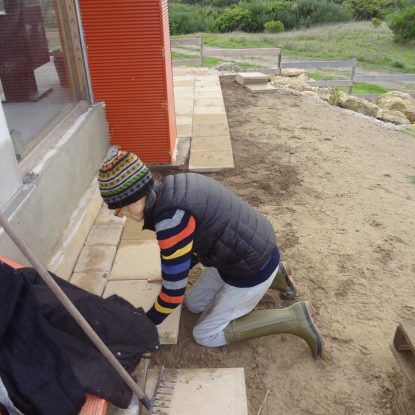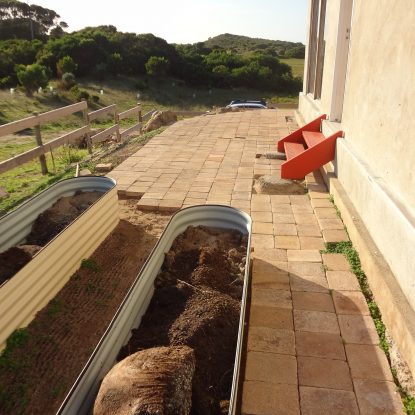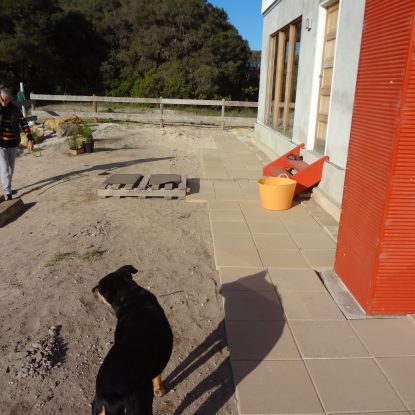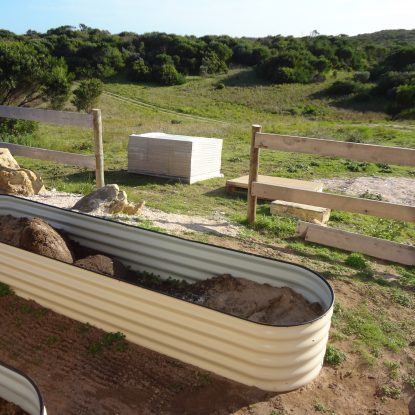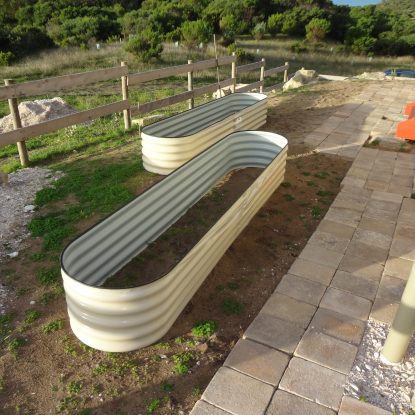This is a posting about the Saw–my Saw. The story is a bit longer than most but I’ve put pictures in to keep you interested. Saws go with wood, and wood with wood stoves, one of which we have installed in the interests of surviving the southern winter. However, recapitulating the logic, a stove needs a constant supply of wood; which must be cut; hence the Saw. Do you see, best Beloved? (my brothers will give you the reference).
I myself use a hand saw. This is it:
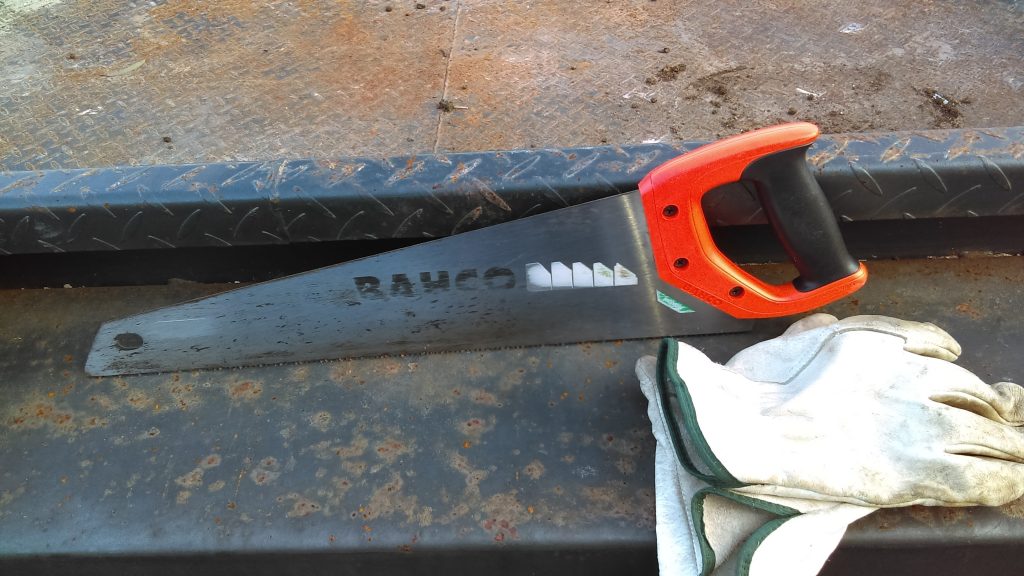
I bought it from the local hardware store for $16 (as in, sixteen–are you kidding?). It is a Bahco saw, and was made in Sweden–Swedish steel, Swedish design, Swedish damn good. It is certainly the sharpest saw I’ve ever owned. I cut all the wood for the stove with it–every day. There are saws that are rusted, or dull, or missing teeth, or loose in the handle, but this is not one of them. This is a Saw. It’s not even very long, as you can see from the gloves. It is, however, practically perfect.
Remarkably there are those who scoff at this practice and think me eccentric. The Brains Trust, with whom I have coffee in the morning, are incredulous: get a chainsaw, get a life! And there are others (I name no names). Indeed, I respond equably. I have used them. I know them for what they are. You have to keep the chain sharp, which is a fiddly, lengthy and annoying task; you have to fit it correctly and constantly check the tension; you have to use it correctly, cutting right up against the handle; you definitely have to miss hidden nails and bolts; you have to wrestle with it when you hit a knot to prevent it from twisting out of your hands and landing on some part of your anatomy; you have to mix the right fuel and feed it constantly with bar oil; you have to keep the plug clean and hope that it starts without breaking the rope. They are also loud and annoying, so you have to wear hearing protectors, and they scare off everything in earshot. And of course things can go wrong and when they do there is little room to work with, and. . .well, enough said. As we know on these latter grounds they are associated with improbable but less than salutary movies. I don’t, it should be clear by now, like them.
My Swedish cross-cut saw, however, has only to be picked up to be used. It cuts sweetly if you use it correctly: keep it upright and straight; don’t press down, let it cut by itself; keep the teeth engaged; use the full length of the cutting edge; cut with an even stroke; don’t rush; keep your thumb clear. Enjoy the process. You won’t even be out of breath. There is something respectful about it; one is grateful that the tree got going–do you know how hard it is for one seed to get itself fertilised and find a conducive place?–and has spent all those years making a living. We appreciate that and cut accordingly. We do not–I cast no aspersions–assault it with a loud, smelly, dangerous machine. Ours, best Beloved, is the art and craft of cutting wood with a good cross-cut saw.
I’ve been cutting, among other kinds of trees, a big, old, dead but still upright sheoak (Casuarina stricta), an ancient species that reproduces dioeciously (there are male trees and female trees and the wind drifts pollen from one to the other) and is found pretty much everywhere in Australia, including across the inland. Its wood has a beautiful grain and is exceptionally hard. It burns with more heat than red gum or pink gum and that’s saying something.
So here I am cutting a branch from the tree. You can see how substantial it is. Here it is vertically:

And here I am beginning to work on it:
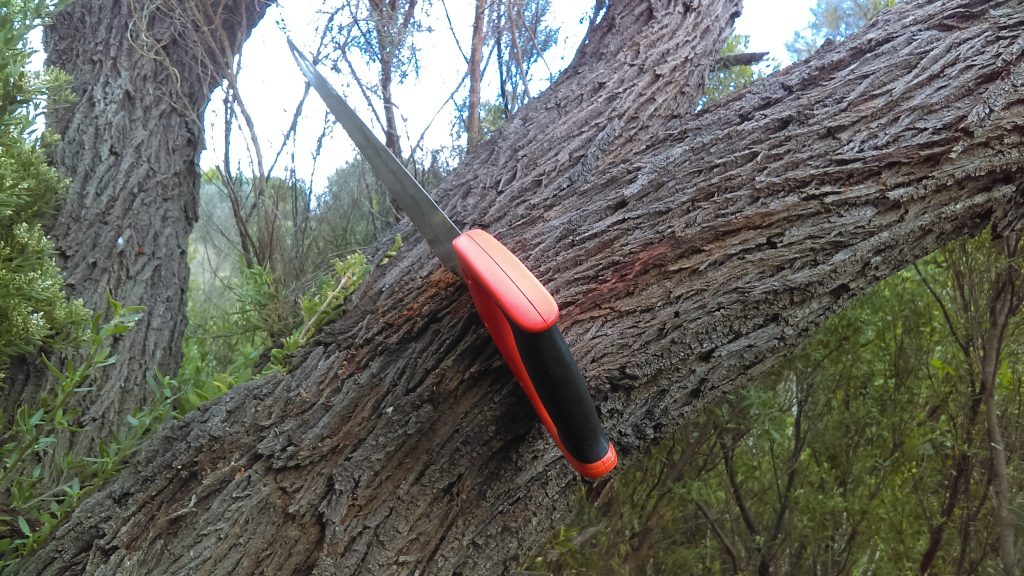
I saw steadily for about ten minutes, stopping perhaps twice. The birds are watching with interest (see, chainsaw losers! the birds stay, they don’t flee as though pursued by an axe murderer–no, that’s another movie, same thing). After a while it begins to creak and I step back out of the way (falling logs can twist and turn as they fall and bounce when they land). The branch wavers for a while in the wind and then cracks and falls.
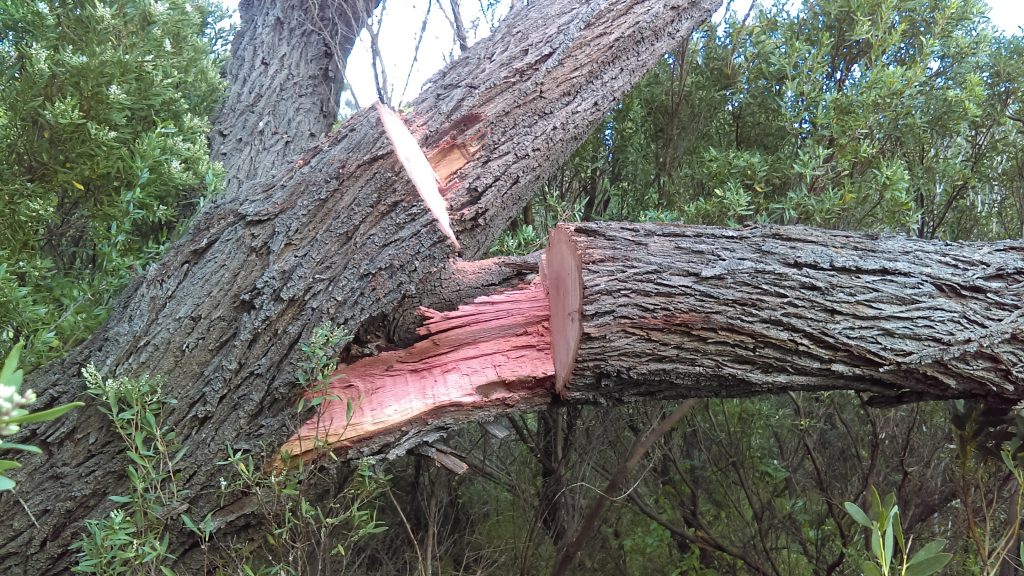
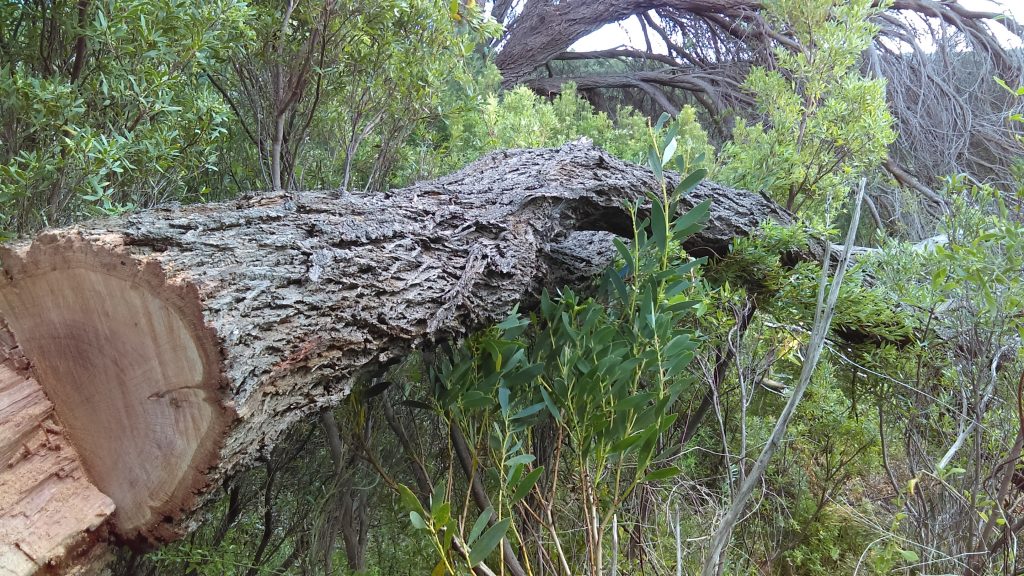
I cut some of the upper branches for the evening stove:
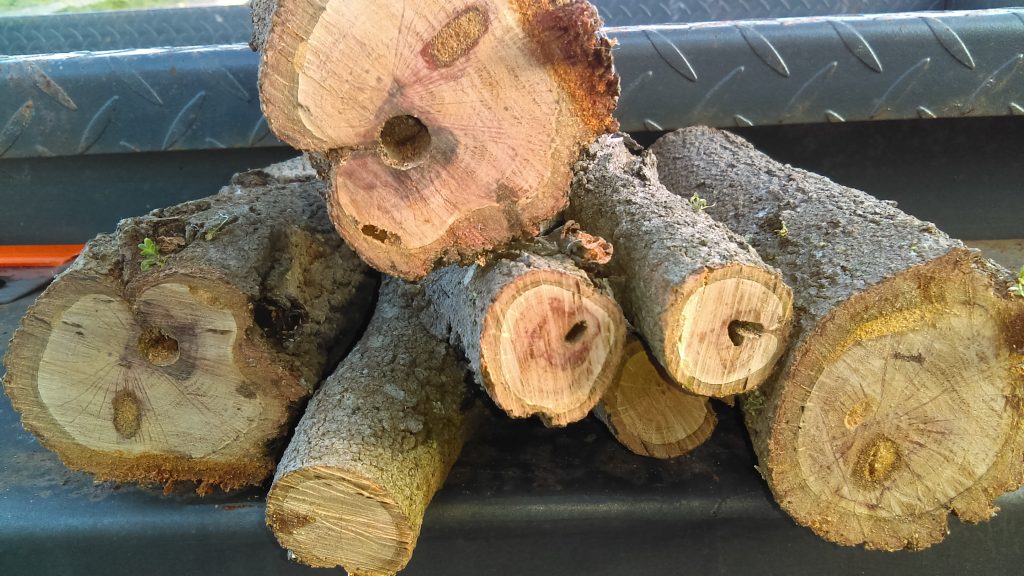
And that is the story of the Saw, best Beloved–a little part of each day I look forward to–a modest pleasure, but my own.

